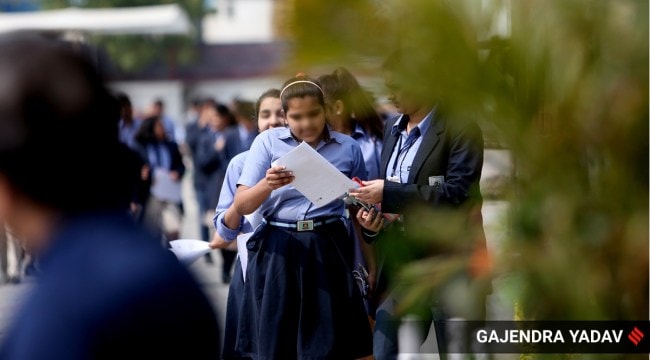Opinion The problem with ASER survey: Reducing learning to absolute measurables
ASER and other such surveys define both learning and assessment in absolute, definite ways. This does not do justice to the dynamic nature of learning processes
 Since 2005, ASER has been claiming in its survey of rural areas that children have been going to schools but not learning. (Express Photo by Gajendra Yadav)
Since 2005, ASER has been claiming in its survey of rural areas that children have been going to schools but not learning. (Express Photo by Gajendra Yadav) That there has been a dip in learning among students as defined by the Annual Status of Education Report (ASER) 2022 is to be expected. The schooling experiences of students were curtailed in several ways during the Covid pandemic. ASER follows the National Achievement Survey (NAS) — the largest, nationwide, sample-based education survey conducted across India to provide structured feedback on students’ learning levels at district, state and national levels. NAS also pointed to the same fact — foundational skills of literacy and numeracy (FLN) have fallen by several points. Even though one may not understand what exactly these points imply, the feeling that something terrible has happened looms large.
Since 2005, ASER has been claiming in its survey of rural areas that children have been going to schools but not learning. Despite the fact that its method of collecting data and the need to conduct this repetitive exercise each year has been criticised, Pratham, its parent organisation believes that it’s communicating the sad reality of their children to parents. This time — unlike in the past — its findings are complimentary of the public school system.
Without rooting for any particular position, I am going to highlight four important trends that it has led to.
One, ASER and other such surveys define both learning and assessment in absolute, definite ways. The problem with this approach is that these processes lose their dynamic nature and get reduced to being lifeless measurable entities. We forget that both learning and assessment have an underlying theory of what we understand by these terms, the ways in which they get reflected and how we interpret them. For example, one view of learning equates learning with memory, so the better the memory, the better the learning. Any assessment tool that captures a student’s memory as a learning marker is a good tool. Another view on learning could focus on children making connections between what they learn in school with their own lives. The nature of questions to assess such learning would be drastically different from the earlier view. What this means is that the acquisition of foundational skills is important but simply one of the several views on learning.
Two, the importance of foundational skills of learning is contested today. While some people regard them as being absolutely fundamental and the most basic requirement for any learning, some others dispute that such an over-emphasis will only lead to disregarding other ways of knowing, learning and expressing it. The problem here is that while for some students, mostly the disadvantaged, FLN is being set as a curricular goal, for some others, a “constructivist approach” to learning is set as an important curricular goal. These two goals allude to two kinds of learning crises. The former refers to the lack of such learning exhibited in their learning assessment surveys. The latter refers to learning without joy — something alluded to in Yashpal Committee Report or the National Curriculum Framework 2005. This, therefore, implies that people at two different ends of the spectrum are thought of differently and their needs are being addressed differently. FLN has been inserted in the National Education Policy 2020 as a singular point of focus undermining all other kinds of learning. That’s cause for concern.
The third implication of these kinds of assessment surveys is the constant need to assess children’s learning for some or the other learning improvement programme. Those children who don’t clear such tests are then identified and additional support is provided to them. This separation or streaming of children into different groups — those who know and those who do not know — leads to greater damage, creating awkwardness and a sense of shame among those who don’t know. Even if one were to regard their goals as being essential and noble, the means adopted violate basic respect and dignity that must be accorded to all learners. This reminds me of a conversation between two children from the Musahar community which a friend relayed to me. When one of those children asks his friend why he does not come to school the other replies that going to school is a very humiliating experience.
Another problem with these surveys is that they discount children’s experiences/efforts of making sense of what they may have gone through during the pandemic period. The lives and day-to-day experiences of all children got affected during the pandemic, albeit in different ways. Their interface with fear and grief, associated with disease, death, disability and economic instability may also have made them more patient, wise and mature, and also, perhaps, more anxious. The surveys shift the responsibility of the school from addressing children’s needs emerging from the new context created by the pandemic to making them catch up and chase letters and numbers in the name of learning. As parents, teachers and educationists, we need to reflect on what we understand by learning and how we would like to relate to children and address their needs, respond to their concerns without belittling them and rubbishing their anxieties.
The writer is Professor, Centre for Education, TISS, Mumbai



